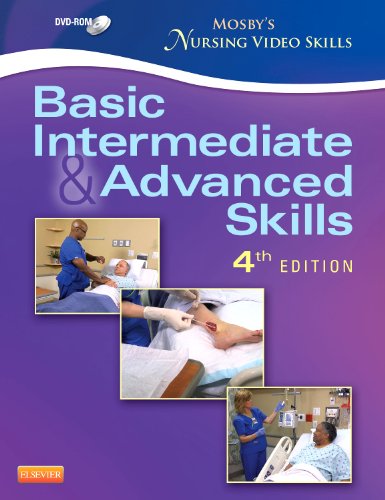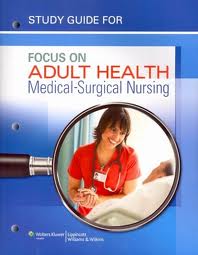Section 1 Introduction to Neurosurgery and Medical Management
CHAPTER 1 Preoperative Assessment and Perioperative Bedside Management
Preoperative Risk Assessment
CHAPTER 2 Nursing Approach to the Neurologic Exam
Outline of the Neurologic Exam
Abbreviated/Screening Exams
When Functional Neurologic Disorder or Malingering Is Suspected
Section 2 Common Procedures and Pathology of the Brain
Chapter 3 Management of the Patient With Subarachnoid Hemorrhage
Ventriculoperitoneal Shunt
Special Considerations for Endovascular Procedures
Access Site Complications
CHAPTER 4 Pathophysiology and Nursing Management of Brain Bleeds
Initial Management of Brain Bleeds
Medical Management of Brain Bleeds
Surgical Management of Brain Bleeds
CHAPTER 5 Nursing Management of the Patient With Acute Ischemic Stroke
Blood Pressure Management
Interventions for the Emergent Treatment of Acute Ischemic Stroke
Thrombolytic Therapy: r-tPA and TNK
CHAPTER 6 Nursing Management of the Patient With a Brain Tumor
Common Treatment Pathways
CHAPTER 7 Nursing Management of the Patient With a Headache Disorder
Common Headache Disorders
Commonly Used Medications for Abortive Treatment
CGRP and Its Importance to Headache
Antiepileptic Medications in Headache
Antidepressants and Headache
Blood Pressure Medications and Headache
Special Considerations for New-Onset Headache
CHAPTER 8 Nursing Management of the Patient With Encephalitis or Meningitis
Evaluation of a Patient Presenting With Meningitis
Intravenous Immunoglobulin Aseptic Meningitis or Encephalitis
CHAPTER 9 Nursing Management of the Patient With Acute Encephalopathy
Assessment—History and Physical Exam
Common Strategies for the Prevention and Treatment of Delirium4 (Fig. 9.3)
Section 3 Common Procedures and Pathology of the Spine
CHAPTER 10 Nursing Protocol for Elective Spine Surgery
Anatomy and Terminology of the Spine
Elective Spine Surgery Preoperative Pathway
Postoperative Pathways/Enhanced Recovery After Surgery
CHAPTER 11 Nursing Management of the Patient With Acute Traumatic Spinal Cord Injury
Common Complications From SCI (Table 11.1)
CHAPTER 12 Spinal Cord Stimulator Management for Nurses
Perioperative Monitoring and Harm Reduction
CHAPTER 13 Nursing Management of Neoplastic Spinal Cord Compression
Spinal Cord Anatomy and Pathogenesis
CHAPTER 14 Nursing Management of Vertebral Osteomyelitis and Spinal Epidural Abscess
Antibiotic Selection and Treatment Monitoring
Section 4 Medical Management of Common Neurosurgical Issues
CHAPTER 15 Diabetes Management in the Neurosurgical Patient
Steroid-Induced Hyperglycemia
CHAPTER 16 Nursing Management of Acute Kidney Injury
Epidemiology and Demographics
Hemodynamic monitoring and management1
Pearls and Considerations
CHAPTER 17 Nursing Management of the Patient With Arrhythmias and Acute Coronary Syndrome
Bradyarrhythmia, Tachyarrhythmia, and Acute Coronary Syndrome
Overview of Tachyarrhythmia
Overview of Acute Coronary Syndrome
CHAPTER 18 Anticoagulation for Venothromboembolism
Causes and Classification of VTE
Best Practice in VTE Management
Inferior Vena Cava Filter
CHAPTER 19 Nursing Management of the Airway and Shortness of Breath
Common Symptoms of Shortness of Breath: Dyspnea vs Orthopnea
Common Postoperative Respiratory Complications
Tracheostomy Care and Oxygen Therapy
CHAPTER 20 Sodium Disorders in Neurosurgical Patients
Physiology and the Consequences of Dysregulation
CHAPTER 21 Identification and Management of Hypopituitarism
Anatomic Structures and Hormone Production
Central Diabetes Insipidus
CHAPTER 22 Nursing Management of Anemia
Postoperative Anemia After Spine Surgery
CHAPTER 23 Nursing Management of Thrombocytopenia
CHAPTER 24 Nursing Management of Dysautonomia: Autonomic Dysreflexia and Paroxysmal Sympathetic Hypersensitivity
Paroxysmal Sympathetic Hypersensitivity
CHAPTER 25 Medical Management of Constipation
Opioid-Induced Constipation
Nonmedical Management of Constipation
Medical Management of Constipation
CHAPTER 26 Nursing Management of the Patient With Postoperative Ileus
Presentation/Clinical Features
CHAPTER 27 Nursing Management of Nutrition in Neurosurgical Patients
Enteral Nutrition: Normal Physiology and Common Complications
Screening Tools: Nutrition and Dysphagia
Modified Consistency Diets
CHAPTER 28 Wound Care in the Surgical Setting
Principles of Wound Healing
Surgical Site Complications
Pressure Injuries in the Perioperative Setting
CHAPTER 29 Nursing Management of Postoperative Fever
Section 5 Complex Issues in Pain Management and Substance Abuse
CHAPTER 30 Pain Management Using Multimodal Analgesia in the Neurosurgical Spine Patient
Nursing Role and Assessment
Multimodal Analgesia Pain Management
Pharmacologic Options in Multimodal Analgesia
Acute Pain Management Service Medications
CHAPTER 31 Nursing Management of the Patient With Opioid Use Disorder
Agonists, Partial Agonists, and Antagonists
Commonly Used Medications in the Patient With Opioid Use Disorder
CHAPTER 32 Social Work Management of the Patient With Opioid Use Disorder
Section 6 Posthospitalization Care
CHAPTER 33 Rehabilitation of the Neurosurgical Patient
Role of the Physical Therapist Versus Occupational Therapist
Discharge Recommendations
Activity Measure for Post-Acute Care
Brace Utilization After Spinal Surgery
Precautions and Restrictions After Neurosurgery
Mobility Considerations After Neurosurgery
Considerations for Nursing












